Honouring the victory of Zhabdrung Ngawang Namgyal of Punakha over Tibetan Forces, Punankha Drubchen is celebrated annually in Bhutan as a major festival. The masked dance in which the story of the 17th century battle is re-enacted, is the major attraction of this festival in Bhutan. The venue of this festival that takes place in the month of March, is the imposing Punakha Dzong which is situated at the confluence of two rivers.
Dubbed an important Tsechu (festival) in Bhutan, Punakha Tshechu marks the unfurling of the sacred Thongdrol of Guru Rimpoche/Padmasambhav. It is believed having a mere sight of the Thongdrol (large tapestry) washes away the sins of the people. Introduced in 2005, Punakha Tshechu honours the Buddhist teachings and contributions of Zhabdrung Rimpoche. The festival takes place soon after the popular Punakha Drubchen and in it too, the mask dance is the major attraction.
A one-day festival in Bumthang, Tharpaling Thongdrol’s primary attraction is the unfurling of a giant Thongdrol or Thangaka (applique silk work). This popular festival in Bhutan takes place in Tharpaling and Chodarek Monastery which is seated on a high ridge overlooking the Chumey and Gaytsa villages. Before the festival, 10 days prayer ceremonies called the Moelam Chenmo are held by the monks for the people of the villages.
Marking as the day of the triumph of good over evil, the Gomphukora festival is an important religious festival in Bhutan that is held in Trashiyangtse. The festival commemorates Guru Rinphoche who defeated an evil spirit known by the name Dikparaza or Myongkha. The major attraction of the festival is the circumambulation performed by devotees in the memory of Guru Rinpoche who is believed to have sat in medidation near a cave here.
A three-day religious festival in Bhutan, Talo Tshechu takes place in the Monastery of the same name a short distance away from Punakha. This main highlights of this popular festival in Bhutan, are the mask dance, atsara (clown) dance, and the sacred Zhungdra (classical dance) by the Talo dance troops. Making this festival even more special are the he three songs of Mani Sum, which comprise the Zhundra set, which are performed at the end of each day of the festival.
A four-day festival, Gasa Tsechu is the biggest festival of the tiny district of Gasa. This festival in northwestern Bhutan takes place in the villages of Laya and Lunana. The major highlights in Gasa Tshechu are the local folk dances along with mask dances. Gasa is a community of highlanders who are known for their distinctive women dresses and jewellery.
Reckoned the biggest festival of the remote Zhemgang District, Zhemgang Tshechu commemorates the birth anniversary of Guru Rinpoche also known as Guru Padmasambhava. The major attractions of this festival in Bhutan are the mask dance through which ancient tales are narrated and the unfurling of a giant Thongdrol/Thangaka. The festival takes place in Zhemgang Dzong for three days in month of March/April.
One of the top two famous religious festivals in Bhutan, Paro Tshechu is held at the imposing Paro Dzong. The festival is being celebrated from 17th century with the consecration of Paro Dzong in 1644. It is a 5-day celebration in which mask dances are performed and on the final day the sacred and impressive Thongdrol (silk applique work) is unfurled for the people who come from all parts of the country.
Also known as Dakpa Kora Festival, Chorten Kora Festival is the oldest religious festival in eastern Bhutan. The festival is held in Trashiyantse where people from Arunachal Pradesh also known as Dakpa visit to circumambulate Dakpa Kora. The Bhutanese pilgrims later join the Dakpas in circumambulation. This festival in Bhutan is dedicated to a young girl from Tawang who agreed to be buried alive in the stupa.
A three-day festival, Domkhar Tshechu is celebrated in Chumey Valley of Bumthang District. This famous event in Bhutan takes place in Domkhar Monastery which was built by Serkhong Truelku during the 18th century. The monastery is also considered to be his residence. The main attractions of Domkhar Tshechu are the Cham Dances (mask dances), folk dances, and the unfurling of large Thongdrols on the last day of the festival.
Celebrated in Ura Valley in Bumthang, Ura Yakchoe is a popular religious event in Bhutan. In this five-day festival, the major attraction is the invoking and escorting of the statue of Yidam Chhana Dorjee, a manifestation of Vajrapani from Gaythen to Ura. Earlier, Ura Yakchoe was celebrated to appease and make offerings to the God of Yaks as well as celebrate the spiritual heritage during the harvest season.
Celebrated in the fifth month of Buddhist calendar, Nimalung Tshechu is yet another important event in Bhutan. This three-day festival takes place in Nimalung Lakhang in Chumey Valley, Bumthang. The major attractions of this religious festival is the unfurling of the Guru Tshengye Thongdrol along with his cham dance. The other mask and folk dances are also performed during Nimalung Tshechu.
A one-day event that is celebrated in the popular Kurjey Lakhang with much pomp and show by the people of Jakar and Kurjey villages, Kurjey Tshechu marks the birth anniversary of Guru Rimpoche also known as the second Buddha. The highlights of this tshechu are the cham and folk dances. The festival is concluded with the display of a large Thongdrol, a mere sight of which is believed to cleanse one from all the sins.
Reckoned to be amongst the most popular tourism festivals in Bhutan, Haa Summer Festival offers the best glimpse of the country’s culture, traditions, beliefs, and art and craft. This colourful festival which takes place in the surreal Haa Valley also offers visitors a chance to experience the Bhutanese hospitality by spending a night in a homestay.
Held in a secluded village of Genekha in Thimphu district, Mushroom Festival is a must-see in Bhutan. It is a two-day festival in which a variety of mushrooms are exhibited with Tricholoma Matsutake species being the highlight. Known to be grown only the forests, this species of mushroom is famed for its succulent flavour. In the festival cultural programs are held along with mushroom picking activity and tasting of Matsutake mushroom soup.
Often regarded as an ultra marathon, Tour of the Dragon is a unique bike race event in Bhutan in which the contestants have to cover 200+ km in a single day, reckoned to be the one of the toughest one-day mountain bike races in the world, it begins from the beautiful destination of Bumthang in Bhutan and concludes in the capital city, Thimphu. The participants have to cover a distance of 268 km and has to cross four high mountain passes.
Known for the Raksha Mangcham or the Dance of the Ox, Wangdue Tshechu or Wandue Tshechu is celebrated in the district of the same name in central Bhutan. It is a five-day celebration that is marked by mask or cham dances and the unfurling of a giant Thongdrol of Guru Tshengye at the last day. The festival which use to take place in Wangdue Phodrang is now held at Tencholing Army Ground since the former was burned in a fire.
Organized to raise awareness about the endangered black necked cranes who are inseparable part of the local community during the winter season. In this festival which is held in the courtyard of Gangtey Goenpa in Phobjikha Valley cultural programs, folk dances and mask dances are performed by the local people. Crane dances and conservation-themed dramas and songs are also performed by the school children.
Held in the premises of a 7th century Jambay Lhakhang in Jakar, Jambay Lhakhang Drup is one of the unique festivals in Bhutan due to the performance of a sacred Tercham (naked dance) which was initiated by Terton Dorje Lingpa. During the festival Mewang (fire blessing) ritual is also performed for the infertile women to be blessed with children. Other dances performed during this festival is Macham, Ging Tsholing, Dramtse Ngacham, Zhana Cham.
Celebrated in the Jakar Dzong or “the Dzong of the white bird”, Jakar Tshechu is a popular festival in Bumthang. It is a five-day event which commences from the 7th day of the ninth month of Bhutanese lunar calendar. The festival that is held in a dzong that is perched on a hillock and has a reservoir from which in ancient people drew water during the battles. The main highlights of the festival are the cham dances, folk dances, and the exhibition of a large thangaka of Guru Rimpoche.
A famed tourism festival in the Punakha region, Rhododendron Festival is a must-see in Bhutan. Held in the Lamperi Botanical Garden, this festival is about exhibiting 29 out of 46 species of rhododendron that grow in Bhutan. At this three-day festival in the month of May, rhododendron garden walk and exhibition, traditional games, local culture and cuisines, cultural programmes, and arts and crafts are the major attractions.
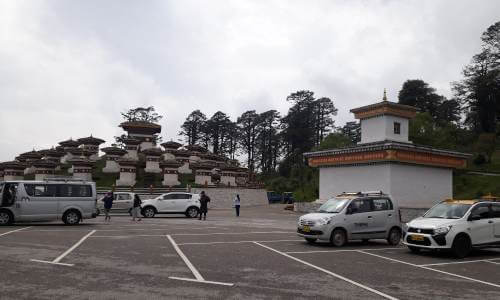
Duration7 Days & 6 Nights
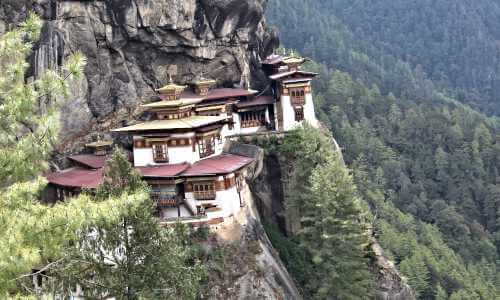
Duration3 Days & 2 Nights
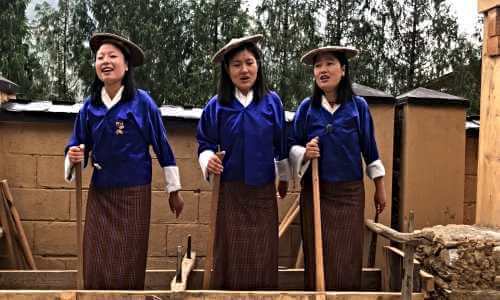
Duration6 Days & 5 Nights

Duration6 Days & 5 Nights
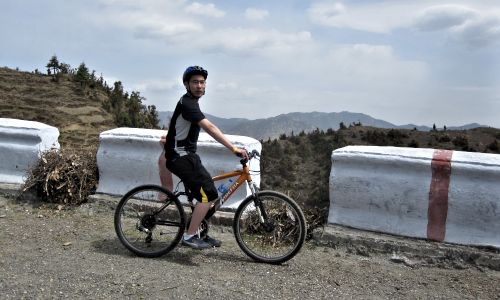
Duration7 Days & 6 Nights
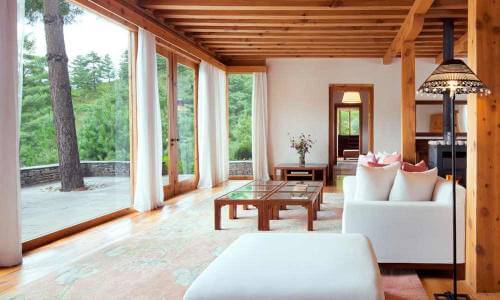
Duration8 Days & 7 Nights
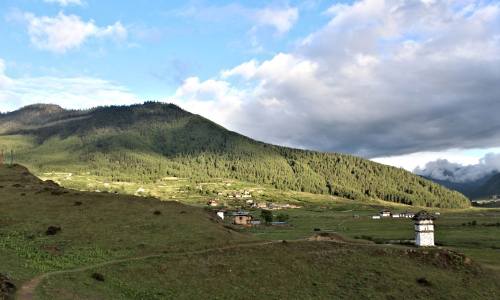
Duration7 Days & 6 Nights
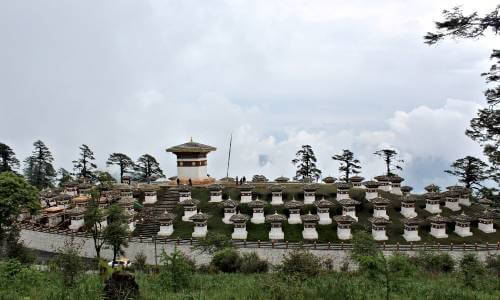
Duration5 Days & 4 Nights
Tshechus are the annual religious festival celebrated on the tenth day of a month of the lunar Tibetan calendar in all the 20 districts or dzongkhags of Bhutan.
Tshechu is a religious event to honour and celebrate the birthday of Guru Rinpoche (Padmasambhava) who brought Buddhism to Bhutan. However, the exact month of the Tshechu might vary from place to place.
The two most popular Tshechus in Bhutan are Paro Tshechu and Thimphu Tshechu. The former one is held each spring, from late March to April. However, the latter is annually held in autumn, from late September or early October.
One of the biggest religious festivals in Bhutan, Thimphu Tshechu is held for three days, beginning on 10th day of the 8th month of Bhutanese calendar (late September or early October) to celebrate the birth anniversary of Guru Rinpoche. The festival takes place in the courtyard of Tashichho Dzong. What adds colour and variation to the festival is Cham or mask dance like Guru Tshengye (Eight Manifestations of Guru) and Shaw Shachi (Dance of the Stags) performed by the lay monks. In a nutshell, it is an occasion to receive blessings and pray for health and happiness.
An annual event, Paro Tsechu is held for three days in the spring season between late March and April in Rinpung Dzong to commemorate the birth anniversary of Guru Rinpoche (Padmasambhava) who brought Buddhism to Bhutan. During Paro Tshechu, mask dances are performed inside the courtyard of the dzong. The festival concludes the unfurling of the world’s biggest silk Thangka or Thongdrel.
A lively masked and costumed dance, Cham or Mask Dance associated with some sects of Tibetan Buddhism and Buddhist festivals. The religious dance festival is mostly performed when celebrating the Bhutanese festival (Tshechus) and is accompanied by music played by monks using traditional Tibetan musical instruments. The unique dance form is performed with the belief that it will cleanse all the evil forces and will be a greater good for all including the people, society and the country.
Being an integral part of the Bhutanese festival (Tshechus), Atsaras are red-faced characters who are more than entertainment offering some teachings. It combines the spirit of the holy and the profane, wisdom and wit, responsibility and humour. With their pranks, they remind the people not to forget their worries and problems but nudge them to overcome their sense of self-importance.
You can plan a trip to Bhutan in the month of April to cover the maximum tourism festivals.
It is always better to take permission before indulging in photography or videography when attending Bhutan Festivals. There are certain monasteries and temples where photography and videography are strictly prohibited. However, our tour guide can assist you with getting permission for the places where you can indulge in taking pictures and shooting videos of the festivals.
Bhutan doesn’t have one best dance festival, there are multiple. Of all, the important ones include Paro Tshechu, Thimphu Tshechu and Tamzing Phala Choepa (Bumthang).
Matsutake Festival celebrated in Ura Valley is the food festival in Bhutan. Attending this festival, one can try out a variety of delicious food items made of mushrooms.
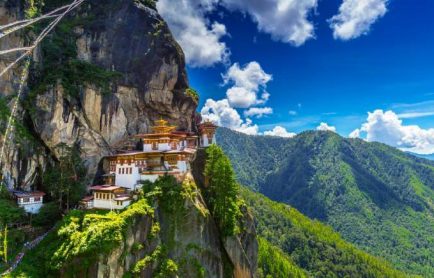
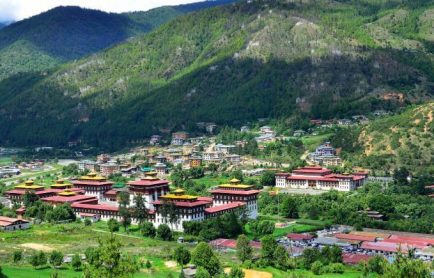
Following are the quick important links to access all the essential information of Bhutan.